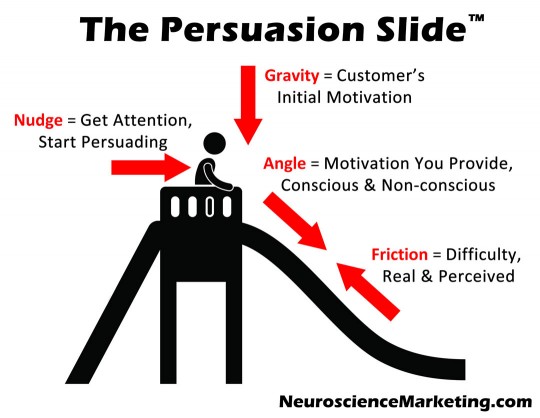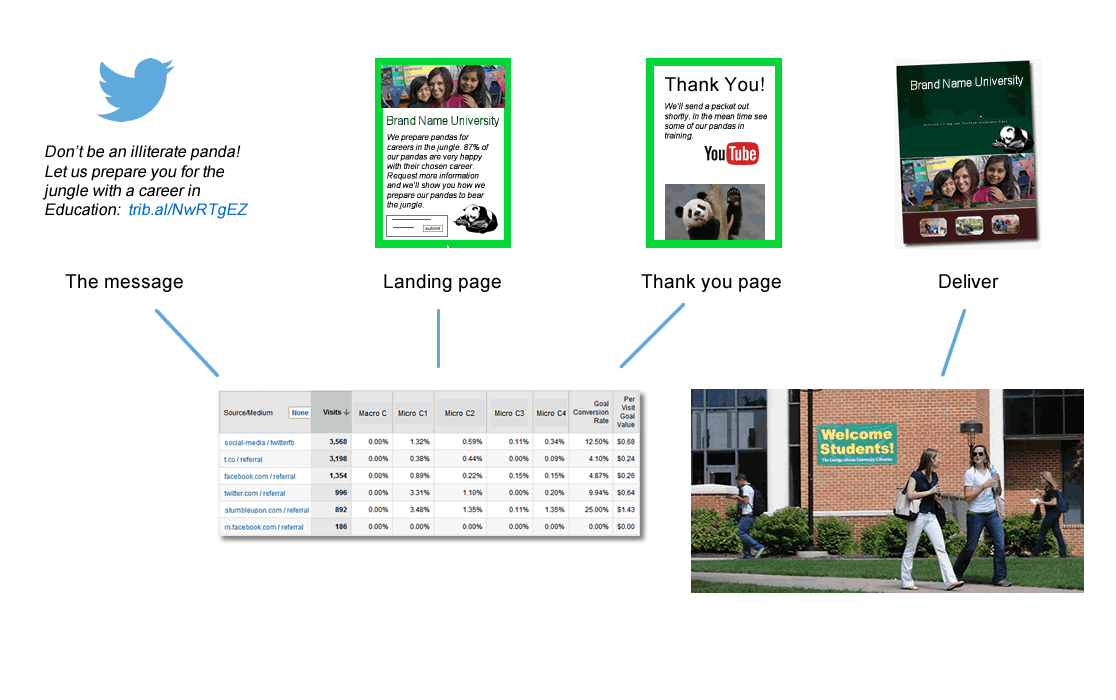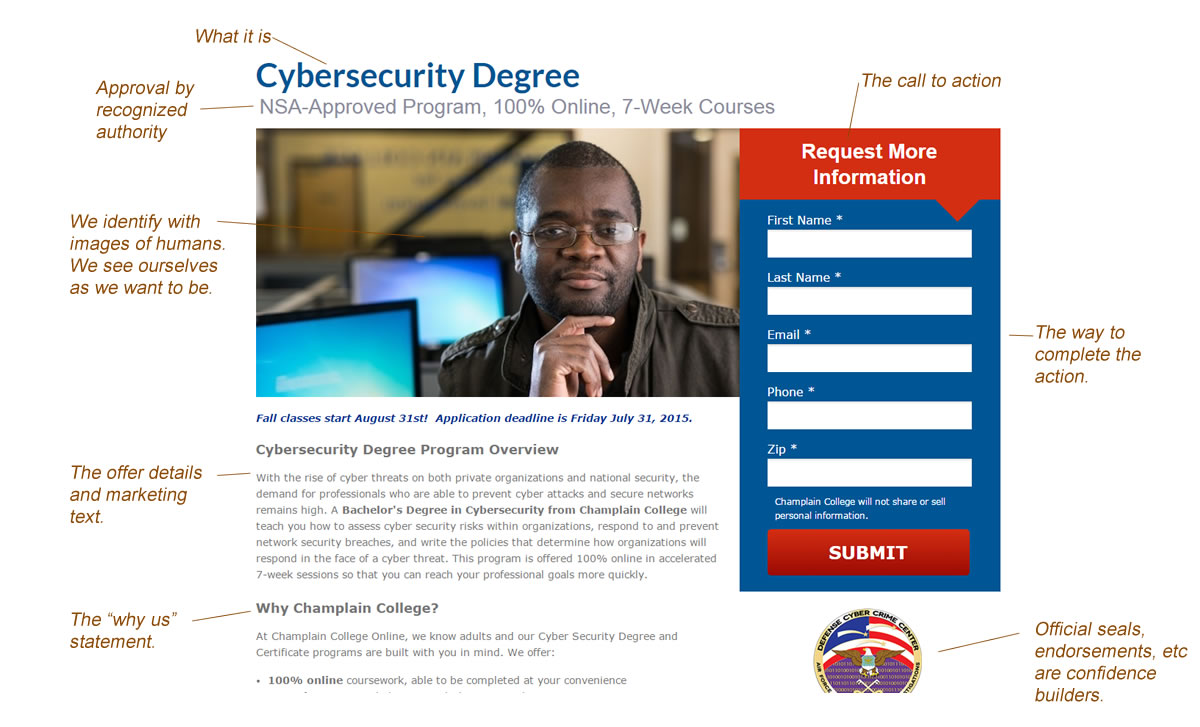Social media is a marketing tool that many businesses have not figured out how to use and measure the value of, let alone higher ed. Social media is a great way to connect with your target audience but when it comes to a marketing strategy and measuring ROI, many are stumped. Are you? Here are 7 steps to develop a social media campaign that will get attention, be successful, and prove the value of your social media investment – or not.
A note of caution
You probably already know this but before you drop anything that even smells like a marketing pitch into your social media stream, you should be established as a contributor and part of the community. Social media users will forgive an occasional pitch but not if you don’t contribute and participate in a genuine way and do so far more often than you pitch.
1. Determine the goal.
 You can’t have a successful social media campaign without knowing what the goal is. The number of likes, retweets, and comments are not a measure of success. Goals need to be tangible and measurable. Goals can be tied directly to applications, requests for information, and requests to schedule a campus visit. These can be measured by form submissions, phone calls to a specific number, or live chat engagements.
You can’t have a successful social media campaign without knowing what the goal is. The number of likes, retweets, and comments are not a measure of success. Goals need to be tangible and measurable. Goals can be tied directly to applications, requests for information, and requests to schedule a campus visit. These can be measured by form submissions, phone calls to a specific number, or live chat engagements.
Just like a traditional ad campaign, a good social media campaign has a target audience (community), message (conversation), and media outlet (channel). The social media campaign is more than the aggregation of the other 3 C’s. Aligning all three C’s around a focused business goal is what makes up a solid social media campaign, and it’s how you choose which metrics are best to measure progress. [1. Leslie Nuccio, Meltwater, A smart social media campaign has a solid business goal]
Control access/use of the action so that it can only happen if the user followed the path you wanted. A landing page without any links to it from anywhere except the one you sent out via social media for example.
2. Plan the experience

The Persuasion Slide – used with permission. [2. Roger Dooley, Neuroscience Marketing, The Persuasion Slide: An Introduction]
You have one shot to impress and hook your audience. Make it count. Think through every step of the experience from the first contact (either direct or from someone else) to the follow up after they’ve completed the action you wanted – and even what happens if they get an error or decide not to complete the action. Details matter. Consider all possible scenarios. Each step needs to build on the previous and provide a seamless experience. It should feel natural and inviting – it doesn’t matter if you’re going for subtle or big and loud. The experience should match the audience.
User Experience Touches the Product Itself, Not Just the Promotion of It. [3. Kristin Low, ClickZ, The Importance of User Experience for Digital Marketing: 5 Key Tips]
3.Choose the platforms
Your target audience tends to use one of the social media platforms more than the others. You can push out the message on more than one but don’t hit every one. That looks desperate and takes a lot of labor and resources to maintain. If I see content pushed out by someone on more than three platforms, I start to lose interest because their messages look automated and the approach scattershot. A focused, deliberate selection shows you are human and selective. Let others broadcast the content on the other platforms.
When it comes to choosing which social media platforms you’ll utilize, select those that offer the best potential for reaching your ideal audience and broadcast the type of media you’ve decided is best suited for your company. … Instead of having a sub-par representation in a lot of places, be awesome on a few of them. [4. Scott Levy, Entrepreneur, How to Choose the Best Social Media Platform for Your Business]
4. Craft the message
Before you begin to write, identify which type of message you’re going to write. This is important to choosing the “voice” you’ll use. There are nine types[5. Pearson Canada, Crafting Messages for Electronic Media] (modes):
- Conversational
- Comments & Critiques
- Orientations
- Summaries
- Reference/Resource
- Narrative
- Teaser
- Status Updates
For a social media campaign, we tend to use teasers and conversational modes. Craft a message that both informs and entices. You’ll need to determine the boundaries of what you can or can’t do – conservative messages for suits or outrageous & hilarious for teens. You don’t need to tell the whole story here. That’s where the landing page comes in.
 Crafting a concise and enticing message for Twitter – for example – can be difficult. Be willing to trim and adapt the message to the channel and even pare it down to it’s bare elements.
Crafting a concise and enticing message for Twitter – for example – can be difficult. Be willing to trim and adapt the message to the channel and even pare it down to it’s bare elements.
Use a persona. Ideally you will have developed personas for each audience type and each social media channel. It takes time but it provides consistency and that helps build trust in you.
“Marketing Personas,” “Persona Profiles,” or “Buyer Personas” are a go-to market segmentation technique for marketers looking to create targeted content. [6. Kate Clark, Hannon Hill, The Marketer’s Guide to Creating Personas for Higher Education]
5. Build a one page wonder
A one page wonder is a landing page that provides the answers to questions, fills in the gaps of information the social media message didn’t cover and most importantly it includes the call to action coupled with the means to complete the action. The user experience should match the persona you used in your social media message and build trust and authority with the user.
One thing missing in the image above are the social media and email sharing tools!
Make sure you send the user to a thank you / follow up page after they’ve completed the action! Put analytics on the thank you / follow up page to feed your goal in Google Analytics (or whatever you use).
6. Analyze everything
Ensure analytics are in place with a goal attached. You could even add a monetary value to your goals. You can assign a goal value by using admissions conversion rates and the value of a registered student. You can likely get numbers from admissions on the number of applicants versus the number of accepts to determine a rough conversion rate if they don’t have one to give you. Or come up with a different way to measure value. It’s just an approximation but it’s useful.
Space your campaigns out (if possible) so you can measure their effectiveness more easily. For example, push out a Twitter campaign and leave it alone for a week. Pay attention to your analytics and you’ll likely see a spike from your followers and retweets on the initial launch followed by traffic from people that didn’t see it on the first day plus more retweets. If you’re lucky, someone will pick it up and publish it on a different platform or even via email. Then you can move ahead with the campaign on another channel.

Goal overview in Google Analytics – used with permission. [7. Avinash Kaushik, Occam’s Razor, Best Social Media Metrics: Conversation, Amplification, Applause, Economic Value]
7. Follow through
If you tell the visitor you’re going to do something. Do it and do it quickly. The moment they leave your website they begin to forget about. Especially if they’re comparing you to someone else.
 Send a reply email, even if it’s automated, it tells them how much you appreciate their contact. Reiterate what you’re going to do for them both in the email and on the thank you page (yes this means a different email and thank you page for each different CTA) and offer them an incentive (if you can) to keep them connected with you.
Send a reply email, even if it’s automated, it tells them how much you appreciate their contact. Reiterate what you’re going to do for them both in the email and on the thank you page (yes this means a different email and thank you page for each different CTA) and offer them an incentive (if you can) to keep them connected with you.
Come visit the campus and get a free meal on us!
If your systems are setup properly, you should be able to personalize this email. Then follow through on your promise. And make no mistake, it IS a promise.
Why do you need a thank you page at all? First of all, it’s the polite thing to do… But more importantly, the thank you page serves as a method to continue your interaction with a user. [8. Megan Marrs, The Wordstream Blog, Think You Can Throw Up Any Old Thank You Page? Think Again.]

Follow the links in the attributions below to learn more!


